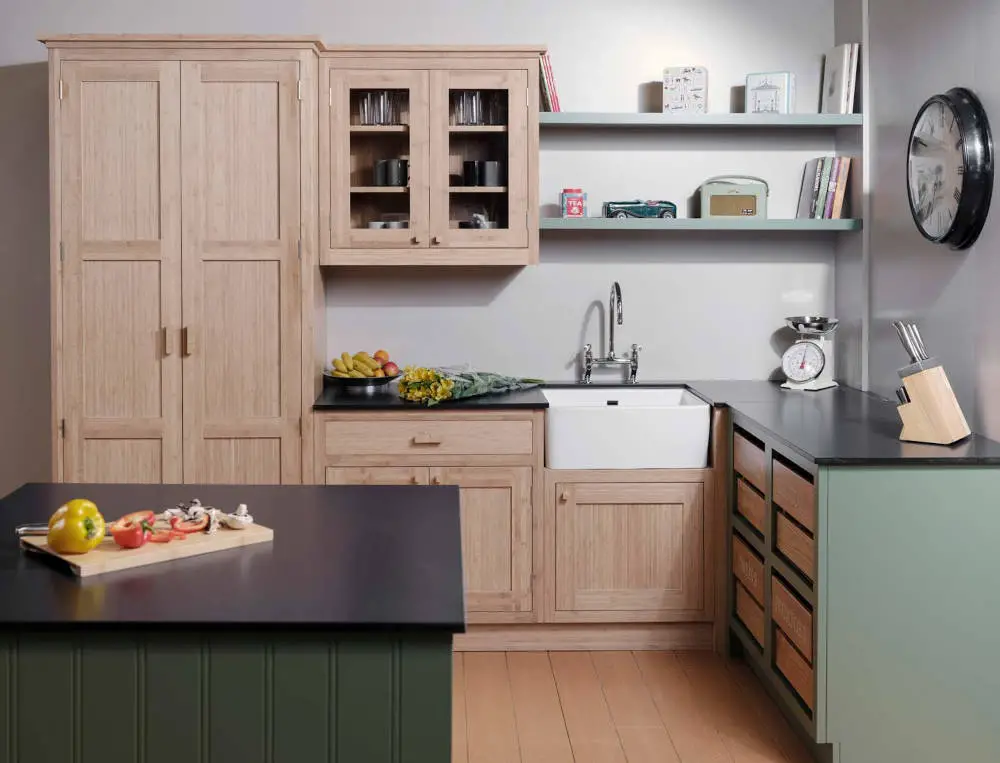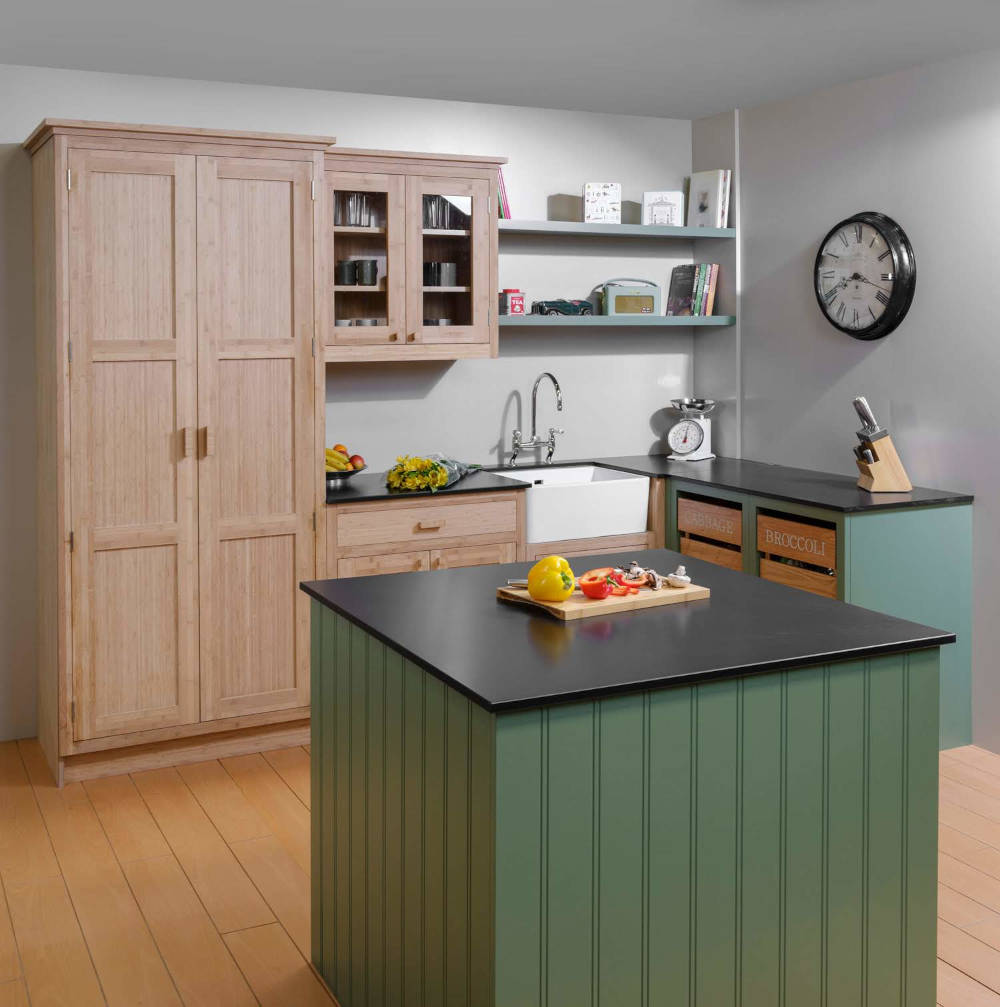
Eco Kitchens Cabinets Made With Bamboo
With sustainable kitchens, the first thing to spring to your mind would be wood from sustainable tree plantations, glues with low VOC content and other similar features that are usually associated with the Eco furniture niche.
Bamboo probably wouldn't be your first choice, would it? However, it's exactly this material that is gradually taking over the whole of the emerging Eco kitchens market.
Making furniture out of grass stalks (and bamboo is just that–an overgrown grass stalk) is not a new concept. Laminated bamboo has a long history. The unique beauty imparted by nature, its superior properties and environmental credentials make it an obvious choice for furniture design.

What Makes Bamboo Eco-Friendly
But how is bamboo eco-friendly, you may ask? In the western world, it won't grow to the right size, so it has to be imported from Asia adding a lot to its carbon footprint.
True, however, compared to conventional forest or tree plantations, bamboo ends up with a lower total carbon footprint because of its unique properties. You don't have to cut out large areas of the natural landscape to make way for bamboo plantations (like you would with palm oil plantations).
It will grow just about anywhere, and you need not consume many resources to grow and harvest bamboo. It's immune against most plant diseases and it's easy to cut and process.
The main difference between trees and bamboo is that you need 100 years to replace a tree and only 5 years to replace a bamboo. It's fast-growing.
Although it may not seem so, maintaining and working a tree plantation is very carbon intense. Keeping a bamboo plantation isn't. Bamboo is like a weed – it will grow anywhere.
Also with production, felling the trees and cutting them into planks work out more carbon-intense than cutting and fabricating bamboo boards.
The bamboo texture is straight with no kinks, the straight fibers are tough but yielding with processing. Bamboo fibers differ from wood fibers.
The former is stronger and denser than most mainstream timber products. So, the resulting plywood or timber can be thinner and lighter, saving costs and gaining space.
Tough and Straight
Because of bamboo's straight fibers, it's easy to bleach or dye–you can achieve almost any tint you can imagine and the finish is smooth and even without unsightly knots or dye concentration.
Aesthetically, from a kitchen designer's perspective, bamboo is an ideal material to work with. Its dimensional stability and low shrinkage factor open up a wider range of application as it's possible to build larger seamless pieces of kitchen furniture.
If you were to compare oak, pine, and bamboo from the perspective of physical features, you can see why some kitchen furniture manufacturers might be tempted to use this new material. Dry shrinkage factor is just 0.25% for bamboo. Compare that with 0.39% and 0.45% for oak and pine respectively.
This means that bamboo kitchen furniture can maintain its size and features. As for tensile strength, again bamboo comes out on top with 185 MPa. It's 153 MPa for oak and 98 MPa for pine.
Bamboo is nothing, but an overgrown stalk of grass. How do you make furniture from grass stalks? By gluing them together, or to use a more professional term – by laminating. In order for something to be classified as a sustainable kitchen, be very selective about what glue you pick for laminating bamboo.
Surely, it would be very easy to just choose the cheapest resin that is used to produce chipboard in modern mainstream furniture. That wouldn't work, though. We make wood panels that are produced for sustainable kitchens using low VOC glue resembling the good old wood glue.
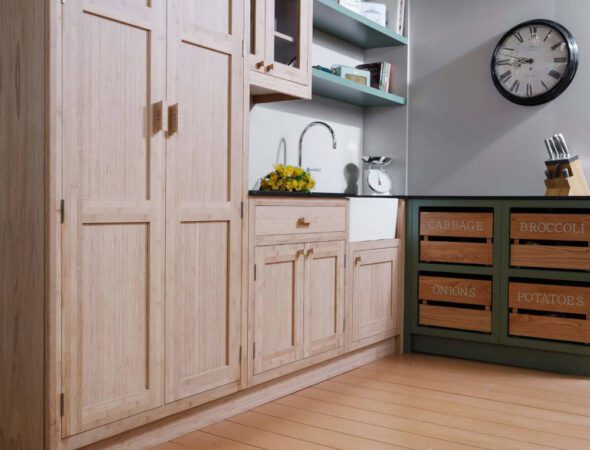
How is Bamboo Manufactured for Eco Kitchens
Harvesting and producing bamboo timber is a special art that takes years to master. You need to pick bamboo stems with wall thickness precisely 7mm. Less than that and you have young bamboo with reduced density. More than that, it goes dry and its fibers are susceptible to warp.
Stem section should be straight and smooth. Once we discard the bad bamboo, we slice and boil the good bamboo.
As we know, pandas eat bamboo. Are you wondering why? Although not delicious, it contains a wide variety of nutrients, ranging from sugars to proteins. You need to boil your bamboo long and slow to remove as many nutrients as so it leaves only the fibers.
We then press the hot raw material down to achieve the required density and to prevent it from changing shape. We then glue and press the sections together to achieve panels that resemble wood both visually and tactility.
Although this versatile material has been used in Asia for centuries, as with every new material, it will take time for bamboo to become mainstream in the Western world.
However, with sustainable kitchens, there are few materials that come close to bamboo in terms of sustainable credentials and aesthetic value.
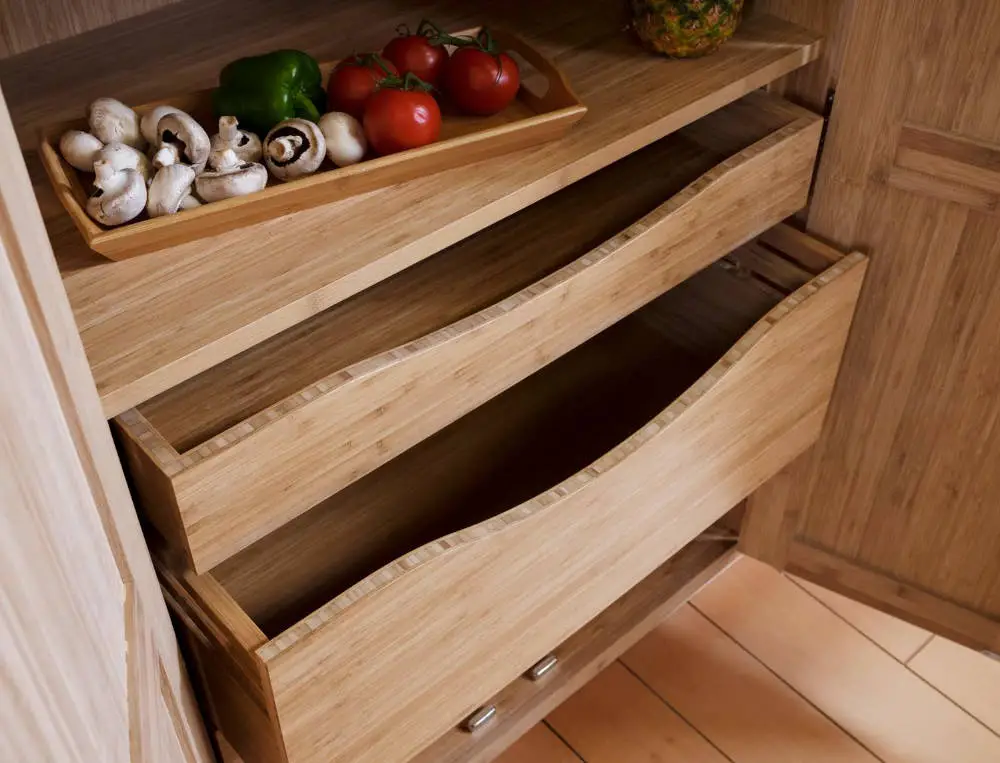

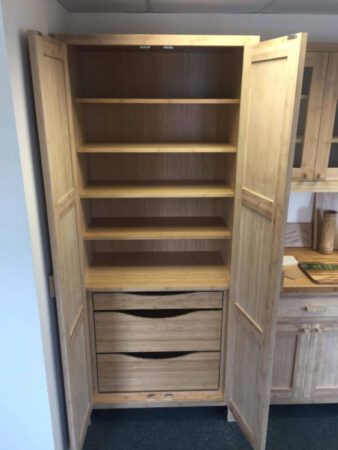

Check out our amazing stone kitchen countertop ideas…..
Related Articles:
- Designing a Kitchen: Expert Tips on How to Plan and Design a Kitchen
- Stained vs. Painted Cabinets: Which is Better for your Kitchen
- Essential Kitchen Sink Accessories that Everyone Should Have in 2022
- Crucial Things to Consider When Choosing Appliance Repair Services
- 10 Wonderful Kitchen Stovetops Perfect for Inspiration (with Pictures)
